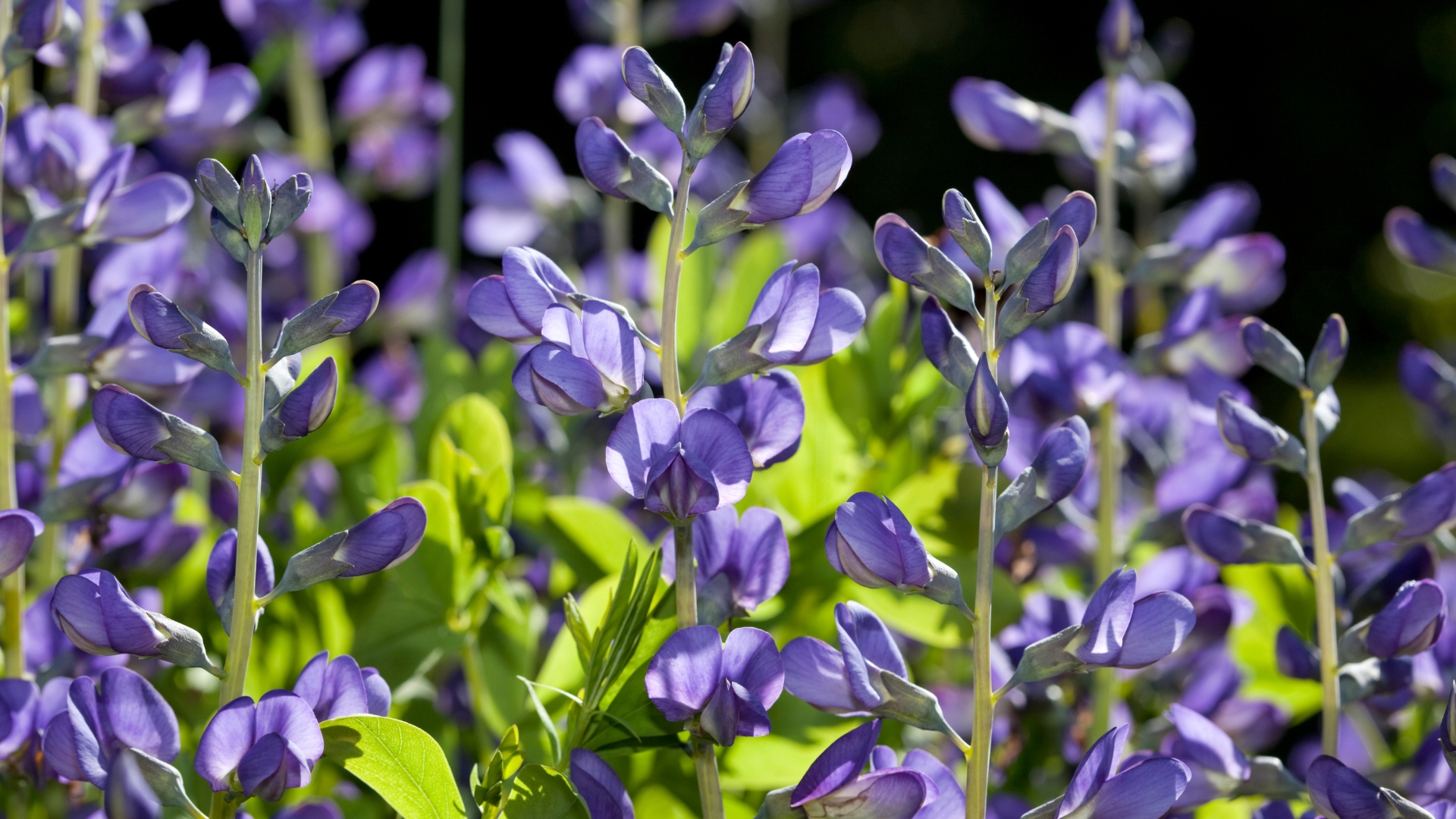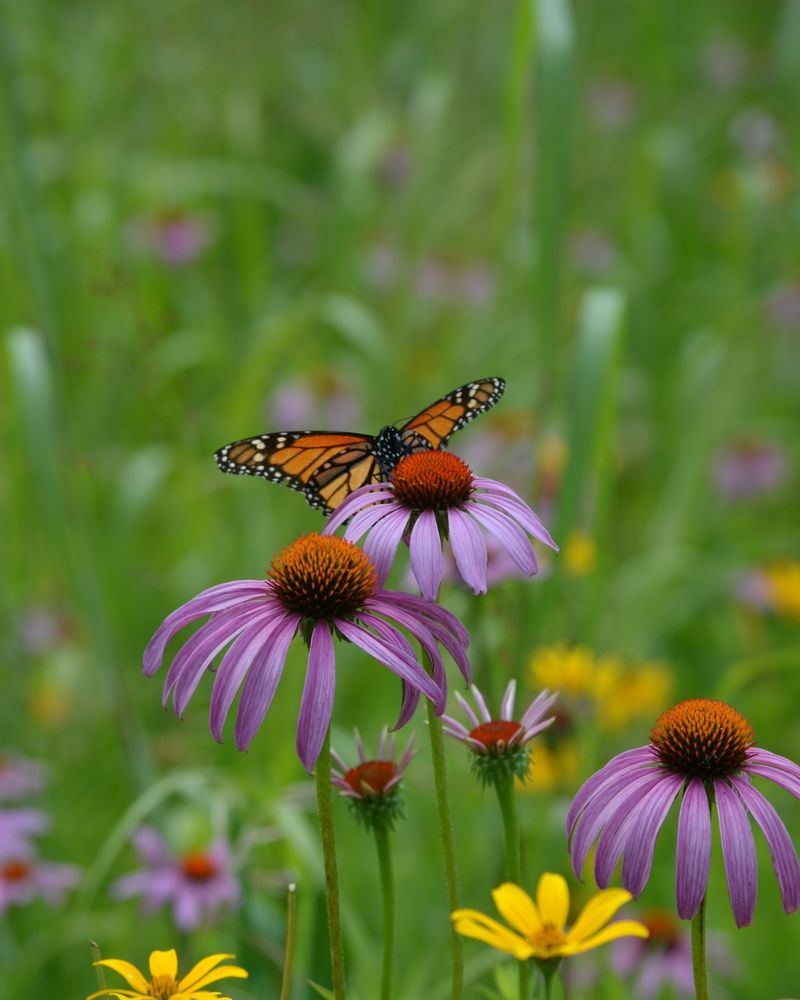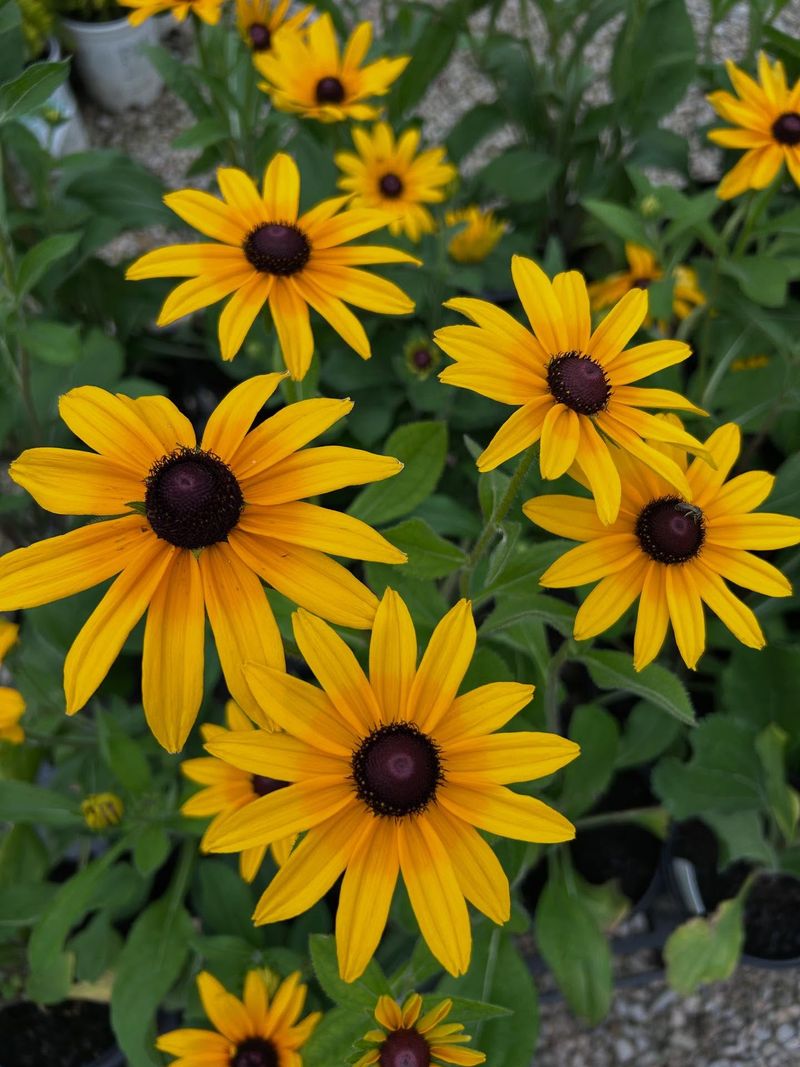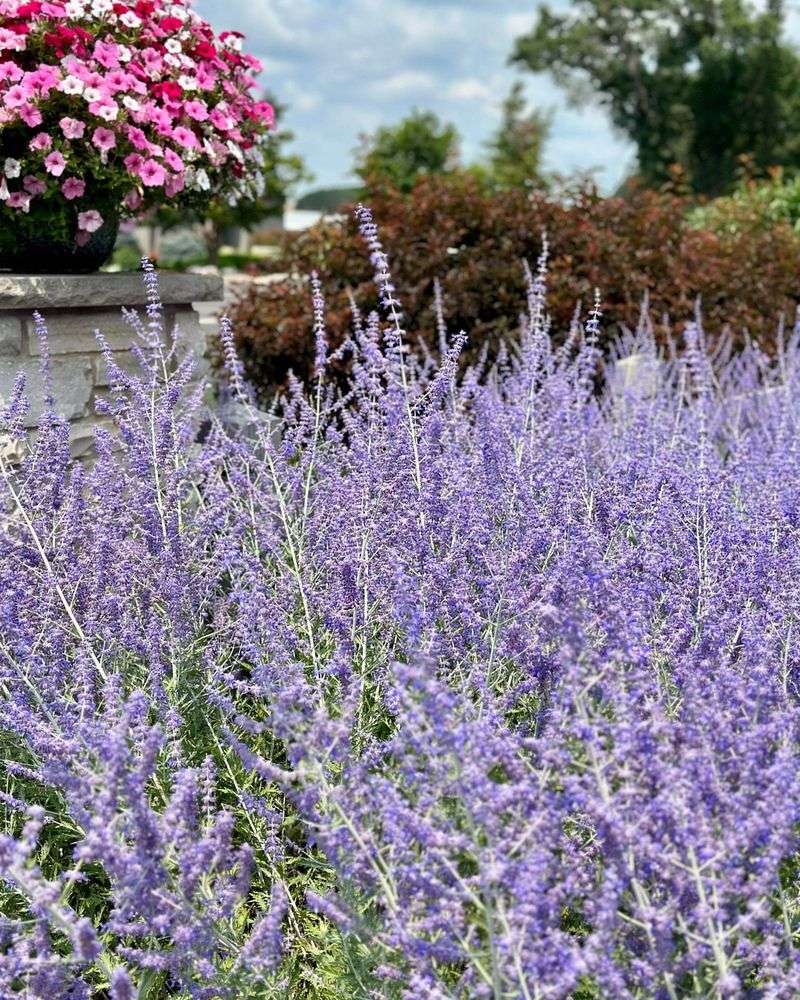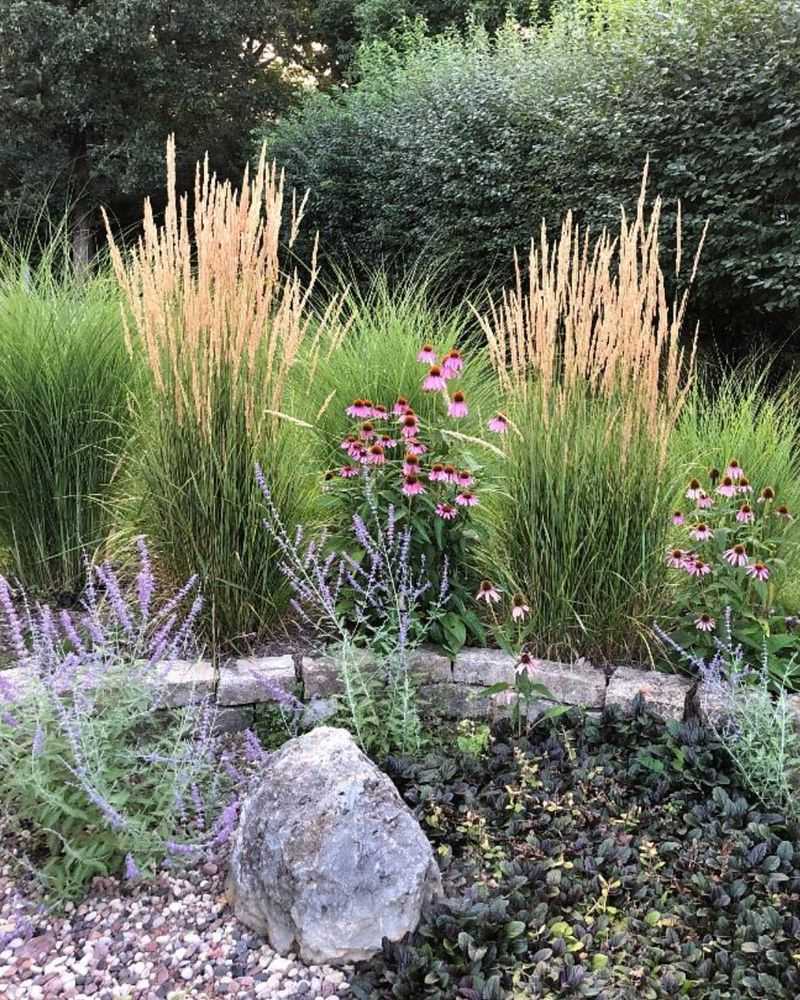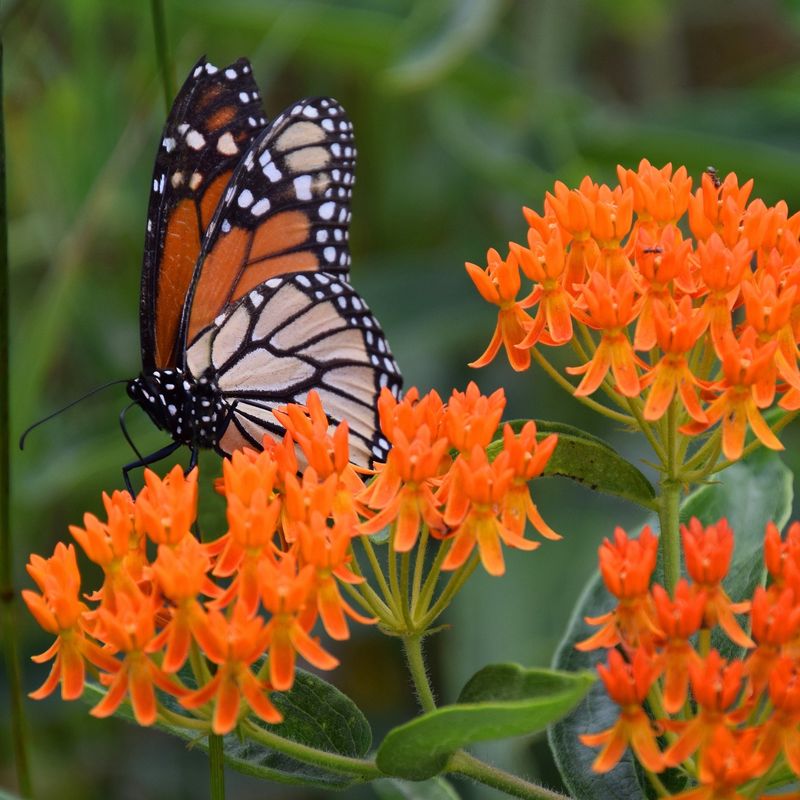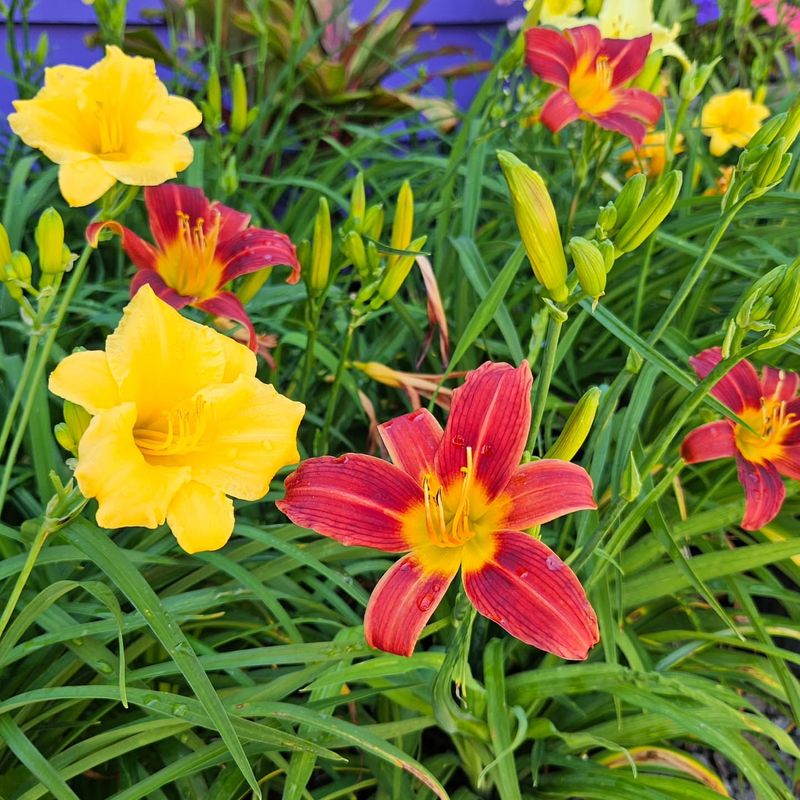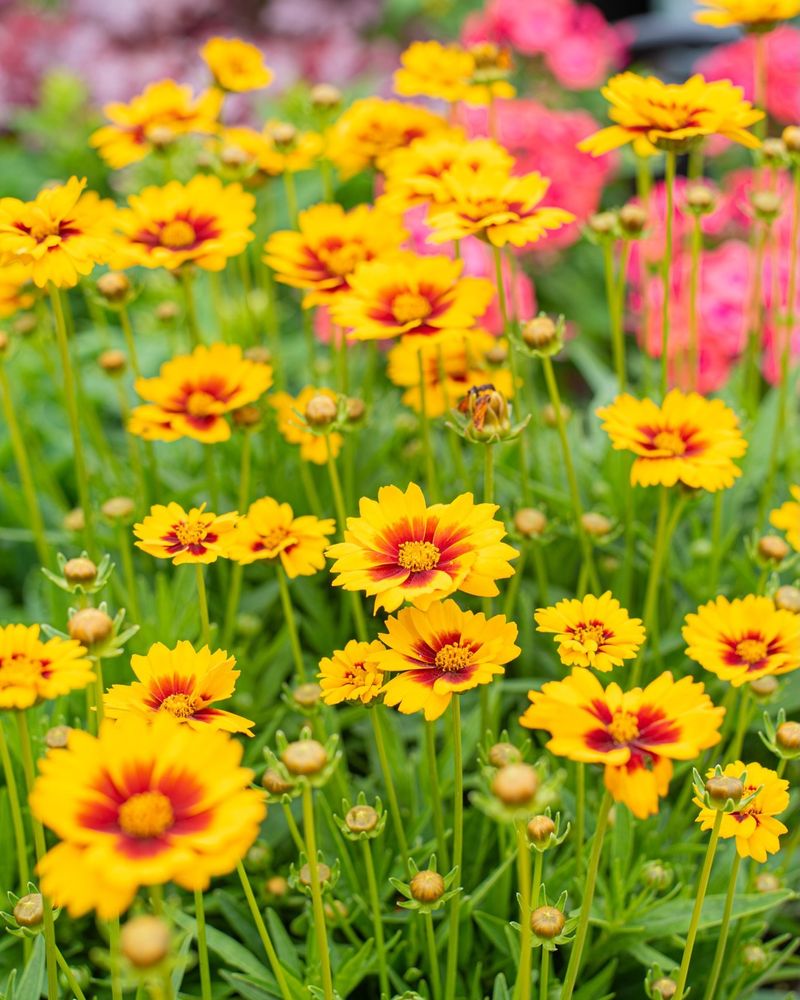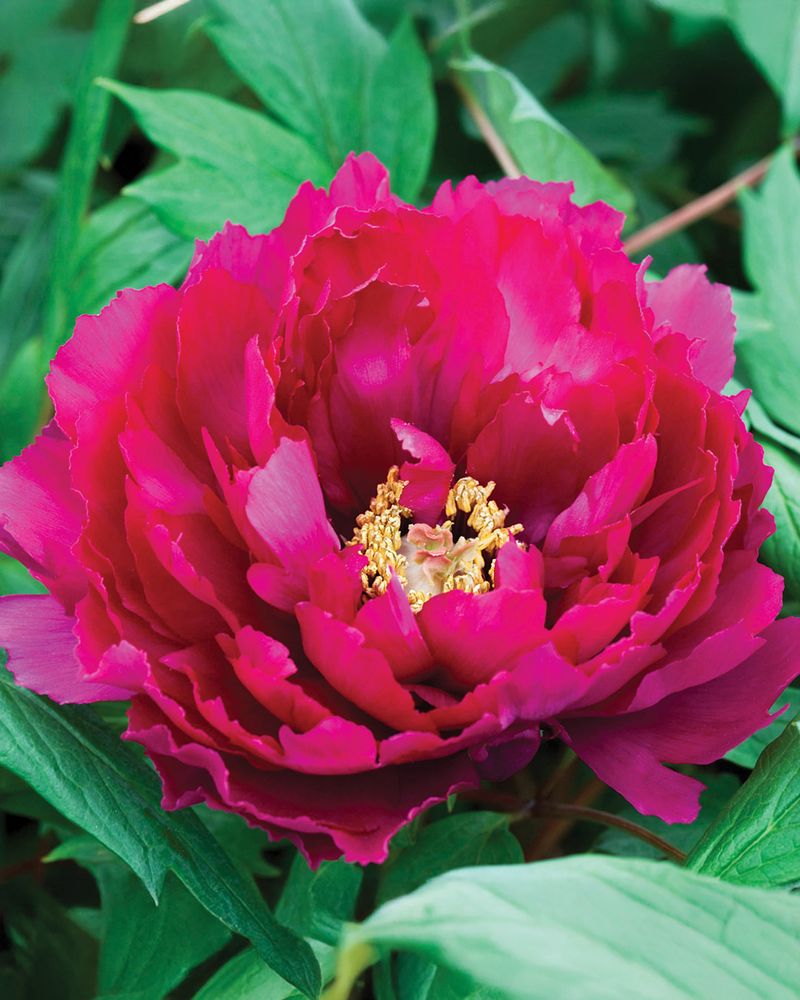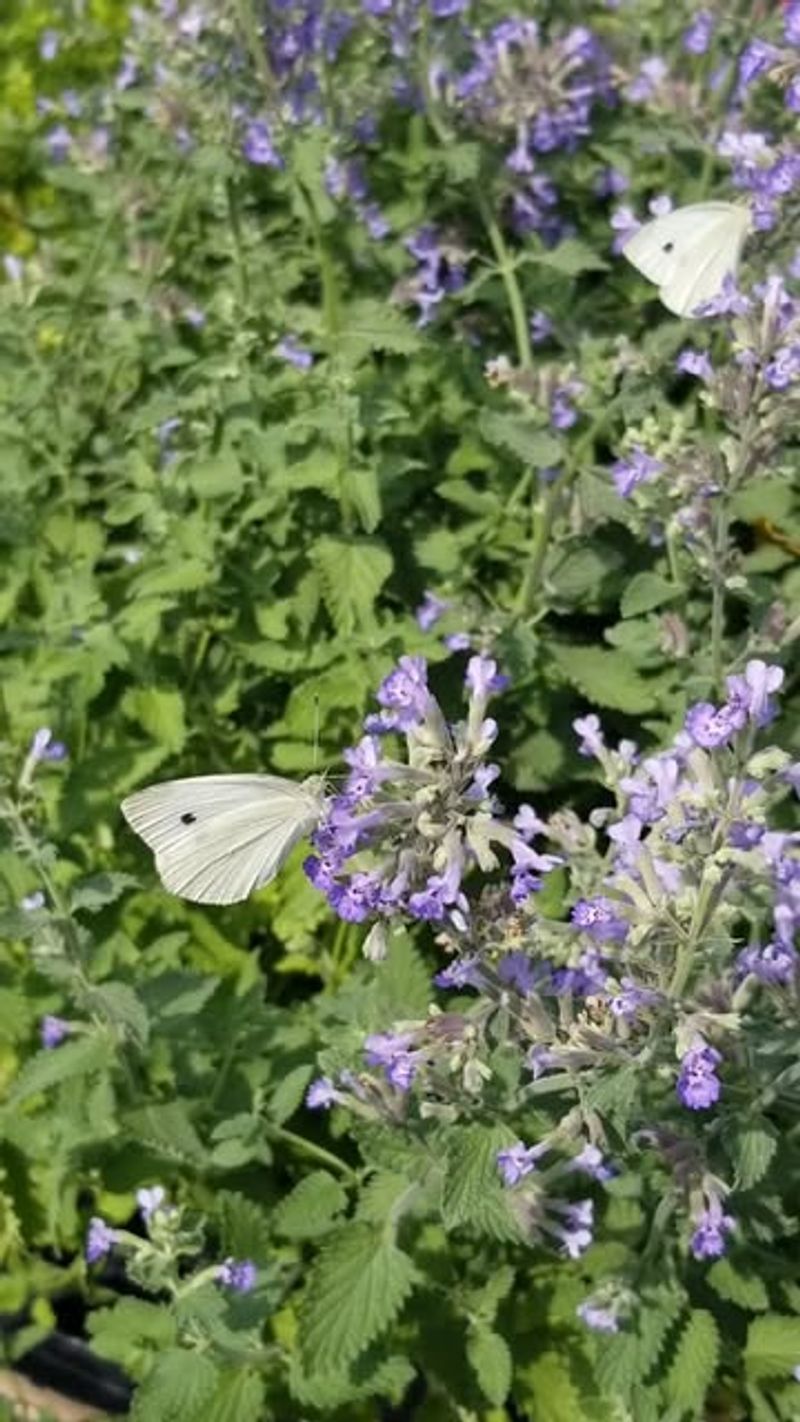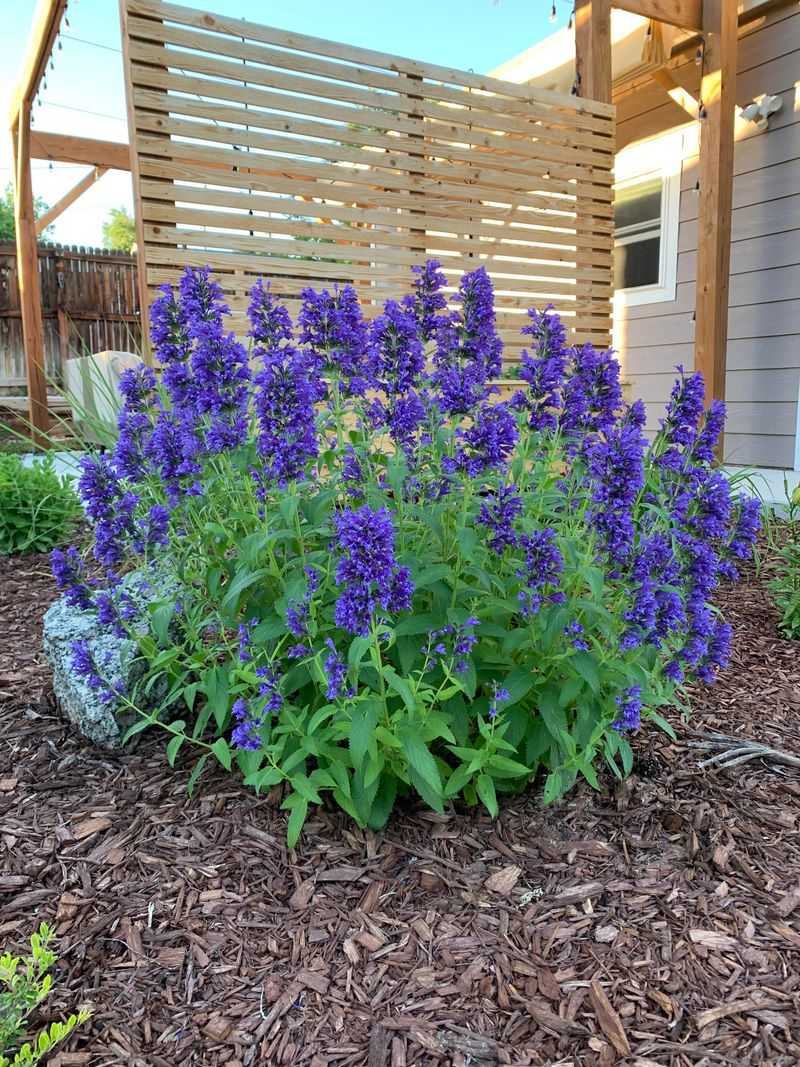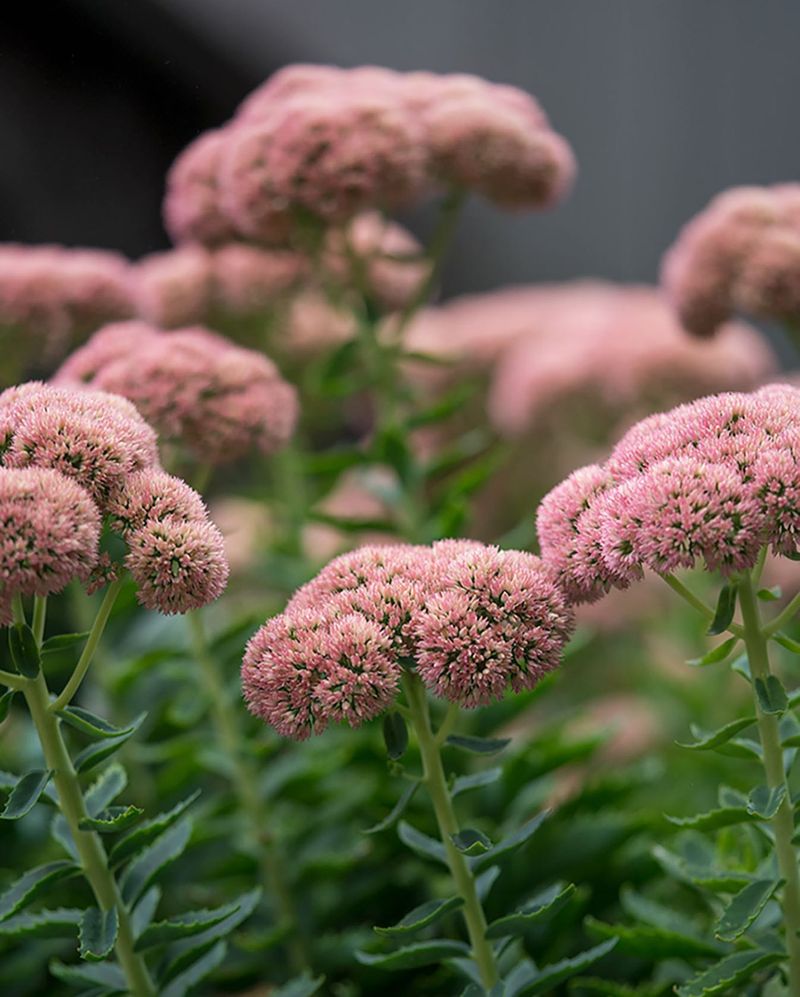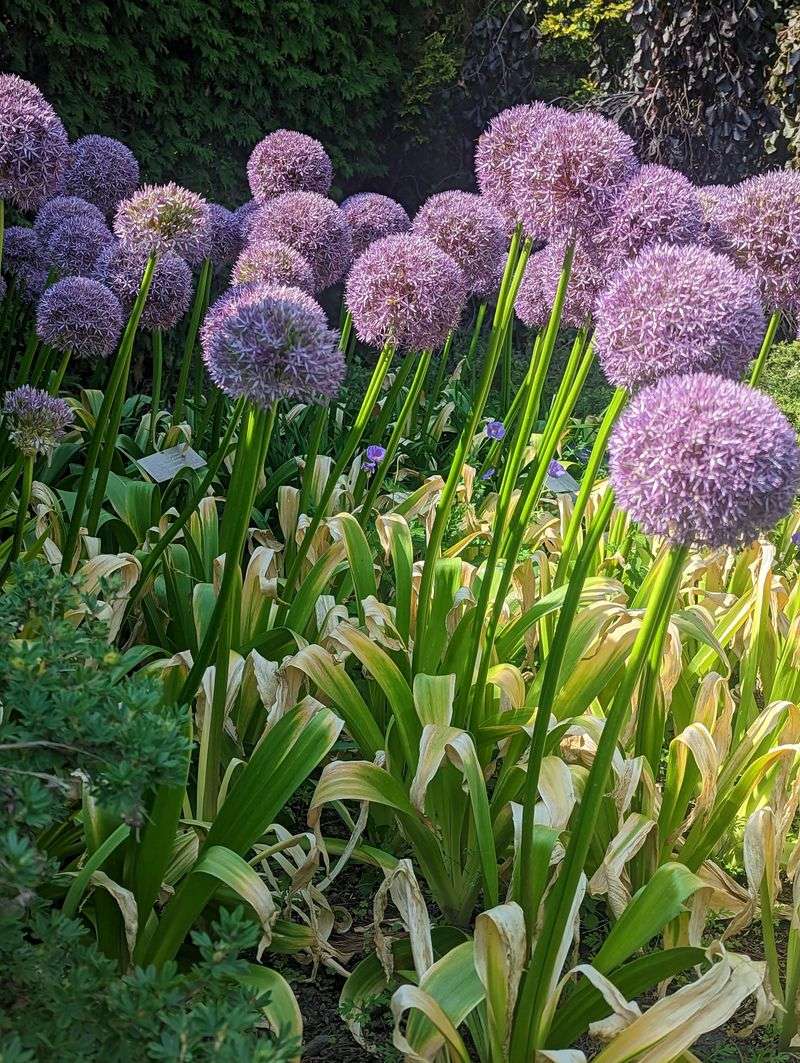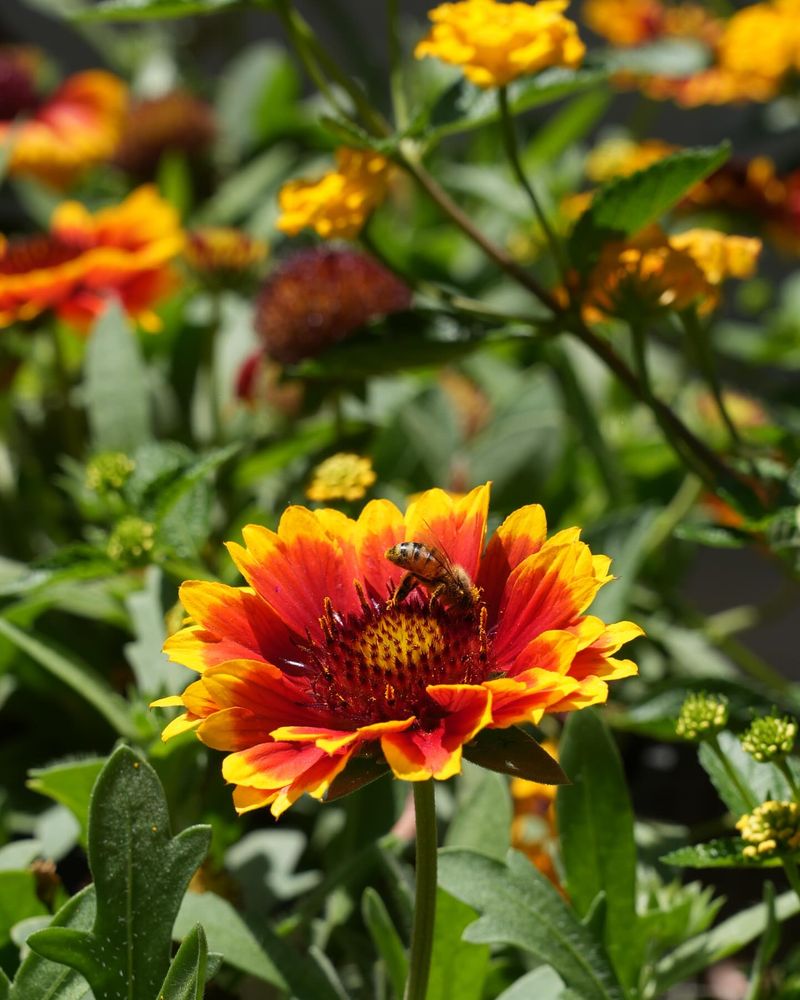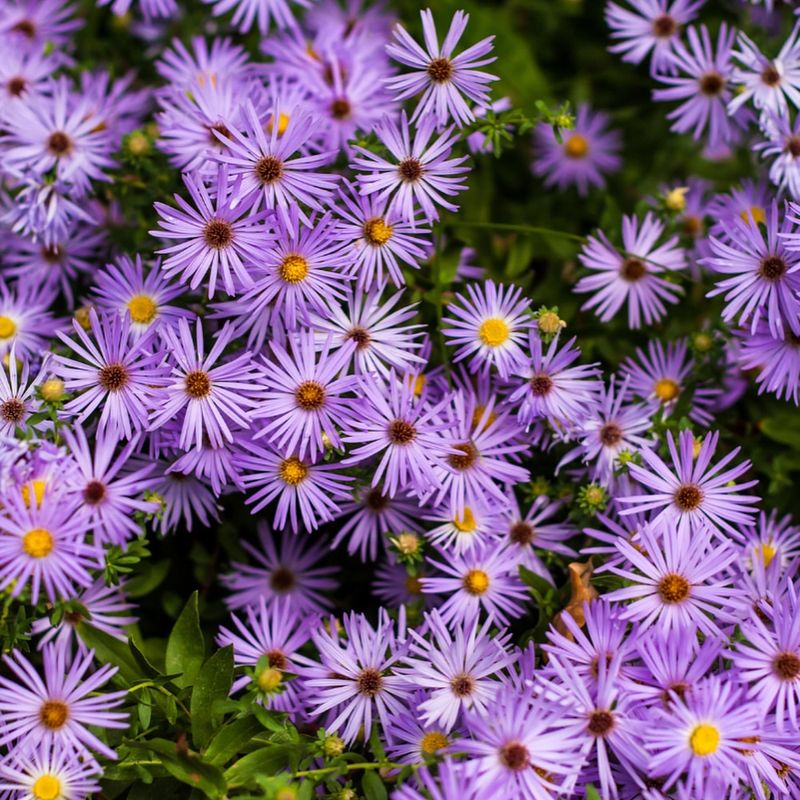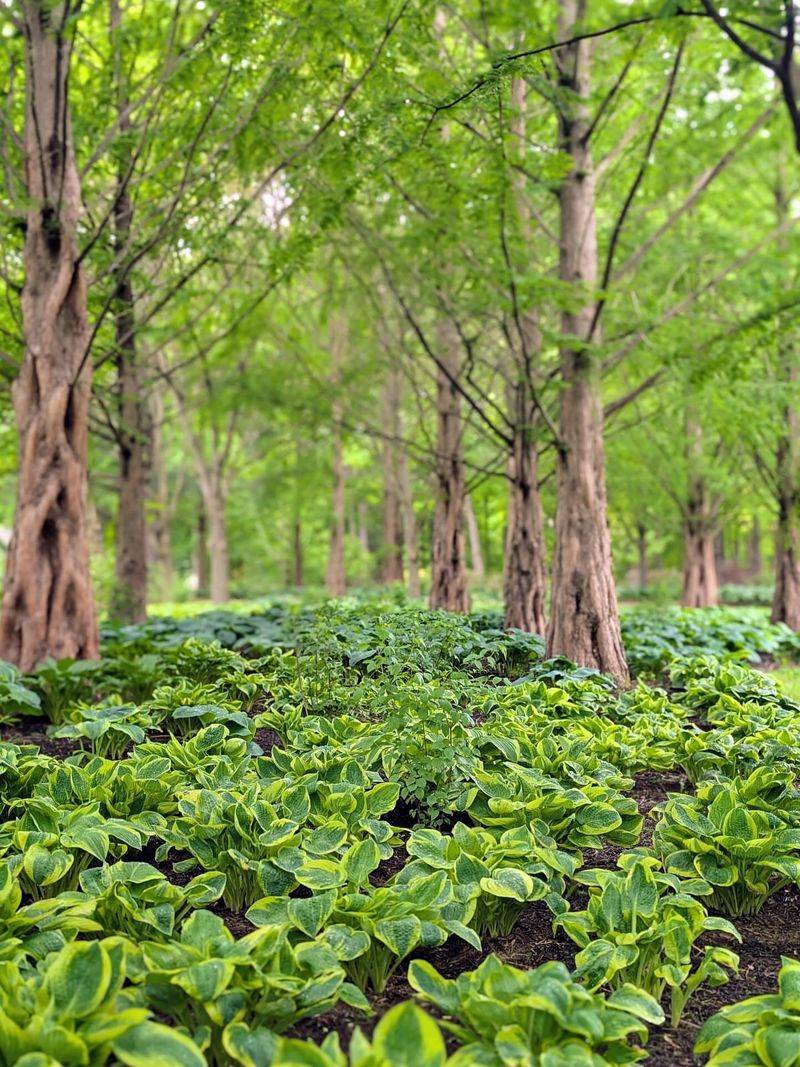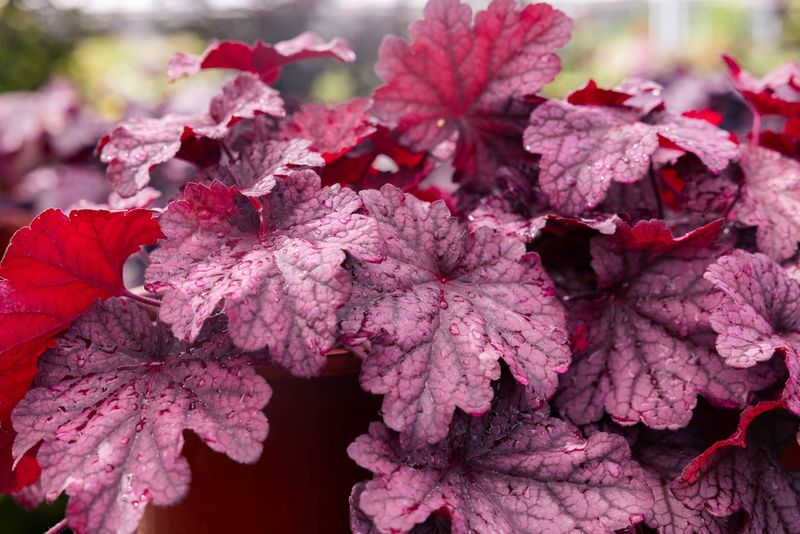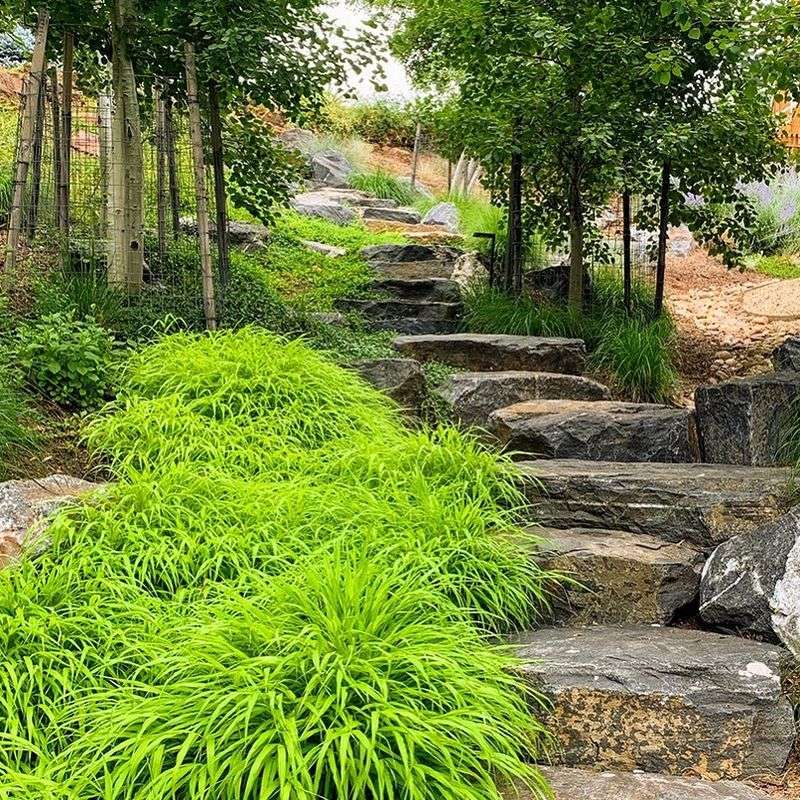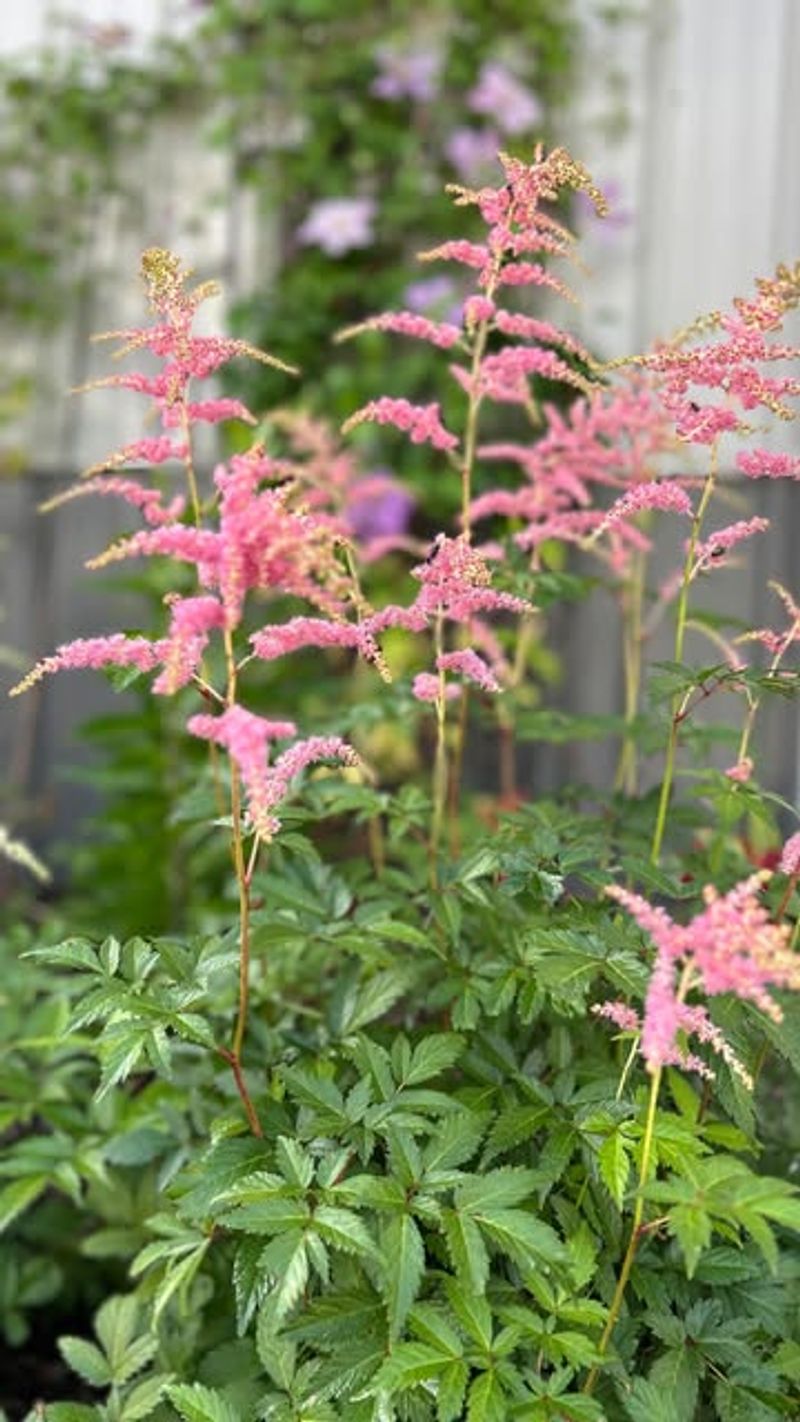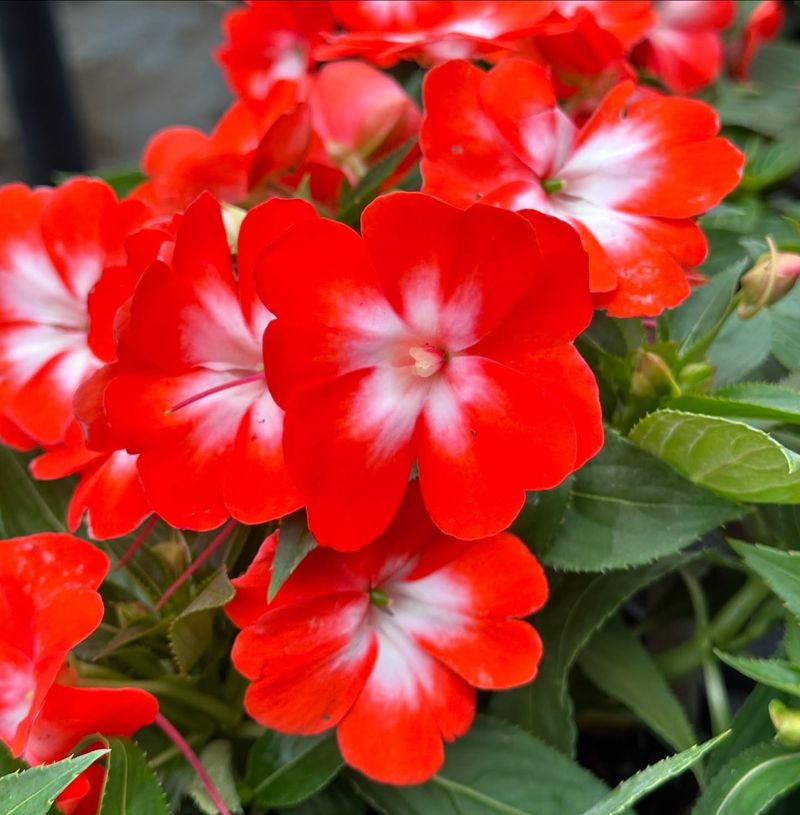Blue false indigo is bold, beautiful, and super easy to grow—but it looks even better when it’s planted with the right companions. The trick is finding plants that match its height, color, and blooming season without fighting for space or stealing the spotlight.
Some make it pop, while others just clash or crowd it out. Choosing the right partners helps your whole garden shine from spring to fall.
1. Purple Coneflower
Standing tall alongside blue false indigo, purple coneflower creates a wildflower meadow vibe that’s simply magical. Their complementary bloom times mean you’ll enjoy waves of color from spring through summer.
The pink-purple daisy-like flowers attract butterflies and bees, turning your garden into a buzzing wildlife sanctuary. Their drought tolerance matches perfectly with false indigo’s resilient nature.
Both plants share similar growing requirements—full sun and well-drained soil—making them natural garden companions.
2. Black-Eyed Susan
Bright golden flowers of Black-Eyed Susan create a stunning color contrast with the cool blue-purple of false indigo. Their cheerful blooms arrive just as false indigo’s flowers are fading, extending the visual interest in your garden.
Both plants share a native heritage and similar growing requirements, making them natural companions. The daisy-like flowers attract pollinators while adding a splash of sunshine to your garden beds.
Black-Eyed Susan’s slightly shorter stature creates a pleasing layered effect when planted in front of the taller false indigo.
3. Russian Sage
Russian sage’s airy, silvery-blue foliage creates a dreamy backdrop for false indigo’s deeper blue flowers. The wispy texture of Russian sage contrasts beautifully with false indigo’s more substantial presence.
Both plants bloom around the same time, creating a stunning monochromatic blue display that’s both sophisticated and eye-catching. Their similar height means they stand as equals in the garden bed.
Russian sage’s drought tolerance makes it an ideal companion, never competing with false indigo for resources. The combination attracts pollinators while repelling many garden pests.
4. Ornamental Grasses
Swaying ornamental grasses like feather reed grass or little bluestem create movement and contrast next to false indigo’s more structured form. Their fine-textured blades complement the broader leaves of false indigo.
Fall is when this pairing really shines—false indigo’s seedpods rattle alongside the golden plumes of ornamental grasses. The winter interest of both plants extends the garden’s beauty into the colder months.
Many ornamental grasses have similar cultural requirements to false indigo, preferring full sun and well-drained soil.
5. Butterfly Weed
Butterfly weed’s vibrant orange flowers create a stunning complementary color scheme when paired with blue false indigo. The fiery blooms seem to pop even more vibrantly against the cool blue background.
As native prairie plants, they share similar growing requirements and drought tolerance. Butterfly weed’s shorter stature makes it perfect for planting in front of the taller false indigo.
True to its name, butterfly weed attracts monarchs and other pollinators, creating a wildlife-friendly garden space. Both plants have interesting seedpods that extend seasonal interest.
6. Daylilies
Daylilies offer a rainbow of color options to complement blue false indigo. Their strappy foliage creates a lovely textural contrast with false indigo’s more rounded leaves.
Blooming just as false indigo flowers are fading, daylilies keep the garden colorful throughout summer. Their similar height makes them equal partners in the garden bed, neither overwhelming the other.
Both plants are remarkably low-maintenance and drought-tolerant once established. Daylilies’ ability to suppress weeds makes them particularly useful companions in mixed borders.
7. Coreopsis
Sunny yellow coreopsis flowers create a cheerful contrast with the cool blue of false indigo. Their daisy-like blooms arrive just as false indigo is finishing its flowering cycle, extending the garden’s color show.
Coreopsis’ finer texture and more delicate appearance balance nicely with false indigo’s bolder presence. Both plants attract pollinators and are deer-resistant, making garden maintenance easier.
Many coreopsis varieties stay compact, making them ideal for planting in front of the taller false indigo. Their similar cultural requirements make them compatible garden companions.
8. Peony
Luxurious peonies bloom alongside false indigo in late spring, creating a stunning garden moment. Their full, romantic flowers contrast beautifully with false indigo’s more architectural blooms.
Both plants are long-lived perennials that can thrive for decades with minimal care. Their similar timing means they create a magnificent spring display when blooming together.
Peonies come in shades from white to deep red, offering plenty of color options to complement false indigo’s blue-purple flowers. Both plants develop interesting seed structures after flowering.
9. Catmint
Catmint’s soft lavender-blue flowers create a dreamy color echo with false indigo’s deeper blue blooms. Its bushy, mounding habit works perfectly at the feet of the more upright false indigo.
Beloved by bees and butterflies, catmint extends the pollinator appeal of your garden. Its aromatic foliage helps repel certain garden pests, protecting your false indigo as well.
Catmint’s long blooming period means it continues flowering even after false indigo has finished, maintaining garden interest. Both plants thrive in similar well-drained soil conditions.
10. Salvia
Salvia’s spiky purple flower stalks echo the form of false indigo while adding vertical accent. Their similar bloom times create a harmonious blue-purple garden moment in late spring.
Many salvia varieties rebloom throughout summer, extending color long after false indigo has finished flowering. The aromatic foliage repels many garden pests while attracting beneficial pollinators.
Both plants prefer similar growing conditions—full sun and well-drained soil—making them natural garden partners. Their drought tolerance once established means less garden maintenance for you.
11. Sedum
Sedum’s fleshy foliage creates a fascinating textural contrast with false indigo’s more traditional leaves. Their late-season pink or russet flowers provide color when false indigo is focused on developing its interesting seed pods.
Both plants have excellent drought tolerance and thrive in similar well-drained soil conditions. Sedum’s lower growing habit makes it ideal for planting in front of the taller false indigo.
The combination offers multi-season interest—spring flowers from false indigo, summer and fall blooms from sedum, and winter structure from both plants.
12. Prairie Dropseed
Prairie dropseed’s fountain-like form creates a graceful contrast to false indigo’s more upright habit. Its fine-textured foliage complements the broader leaves of false indigo, adding diversity to the garden tapestry.
Both plants share native prairie heritage and similar cultural requirements. In fall, prairie dropseed turns a beautiful golden-orange, complementing false indigo’s dark seedpods.
The grass’s delicate, airy seed heads create movement and catch light in ways that highlight false indigo’s more substantial presence. Together, they create a naturalistic planting that evokes the American prairie.
13. Allium
Allium’s globe-shaped purple blooms create a spectacular spring pairing with false indigo’s blue spires. Their perfectly timed blooms overlap for a magical garden moment that draws every eye.
The architectural quality of both plants makes them natural design partners. Allium’s spherical flowers provide a geometric contrast to false indigo’s more vertical bloom structure.
After flowering, allium’s dried seedheads continue to add interest alongside false indigo’s developing seed pods. Both plants prefer similar well-drained soil and full sun positions.
14. Blanket Flower
Blanket flower’s red and yellow daisy-like blooms create a bold color contrast with false indigo’s cool blue. Their warm tones seem to glow even more vibrantly against the blue background.
While false indigo blooms in spring, blanket flower continues flowering through summer and fall, extending the garden’s color season. Both plants attract pollinators but resist deer browsing.
Blanket flower’s more compact size makes it perfect for planting in front of the taller false indigo. Their shared preference for well-drained soil and full sun makes them compatible garden companions.
15. Aster
Fall-blooming asters extend your garden’s color season long after false indigo has finished flowering. Their daisy-like blooms in shades of purple, pink, or white create a second wave of beauty.
The textural contrast between aster’s small, abundant flowers and false indigo’s bold seedpods creates visual interest. Both plants attract pollinators and provide multi-season garden structure.
Many aster varieties share false indigo’s native heritage and similar growing requirements. Their reliability and low maintenance needs make them perfect partners in a sustainable garden design.
16. Hostas
Avoid pairing hostas with blue false indigo—their growing requirements simply don’t align. Hostas prefer shade and moisture, while false indigo demands full sun and excellent drainage.
When forced to grow together, both plants struggle. Hostas become scorched and stressed in the sunny conditions false indigo requires, while false indigo grows leggy and weak in the shadier spots hostas prefer.
Their aesthetic styles also clash—hostas’ tropical-looking foliage feels at odds with false indigo’s more meadow-like appearance. Choose companions with similar cultural needs instead.
17. Coral Bells
Coral bells might seem like a good companion for false indigo, but they actually have conflicting needs. While false indigo thrives in average to dry soil, coral bells demand consistent moisture to look their best.
The delicate, colorful foliage of coral bells can become crispy and damaged in the drier conditions that false indigo prefers. Their more woodland aesthetic also feels somewhat out of place with false indigo’s prairie style.
In hot summer regions, coral bells struggle to survive alongside false indigo without extra watering, creating maintenance headaches. Choose companions with similar drought tolerance instead.
18. Japanese Forest Grass
Japanese forest grass requires shade and consistent moisture—exactly the opposite of what false indigo needs. When planted together, one or both plants will inevitably suffer.
The delicate, variegated foliage of Japanese forest grass quickly burns in the full sun position that false indigo demands. Their aesthetics also clash, with forest grass’s woodland character contrasting awkwardly with false indigo’s more meadow-like appearance.
Even their growth habits conflict—forest grass spreads horizontally while false indigo grows more vertically. This pairing creates both visual and cultural discord in the garden.
19. Astilbe
Astilbe requires consistent moisture and partial shade—conditions that would make false indigo rot and flop. When forced to share space, one or both plants will show signs of stress.
The feathery plumes of astilbe quickly brown and shrivel in the dry, sunny conditions that false indigo prefers. Meanwhile, false indigo becomes leggy and weak if placed in astilbe’s shadier habitat.
Their blooming times overlap, but the delicate pink or white astilbe flowers lack visual harmony with false indigo’s bolder blue blooms. This mismatch creates a garden design that feels unintentionally chaotic.
20. Impatiens
Annual impatiens and perennial false indigo make for a truly mismatched garden pairing. Impatiens demand shade and constant moisture, while false indigo thrives in full sun with excellent drainage.
The tropical appearance of impatiens clashes visually with false indigo’s more naturalistic look. Their bright, candy-colored blooms create a jarring contrast with false indigo’s subtle blue-purple flowers.
From a maintenance perspective, impatiens require frequent watering and fertilizing that would harm false indigo. Their completely different lifespans—annual versus long-lived perennial—also make them impractical garden companions.

